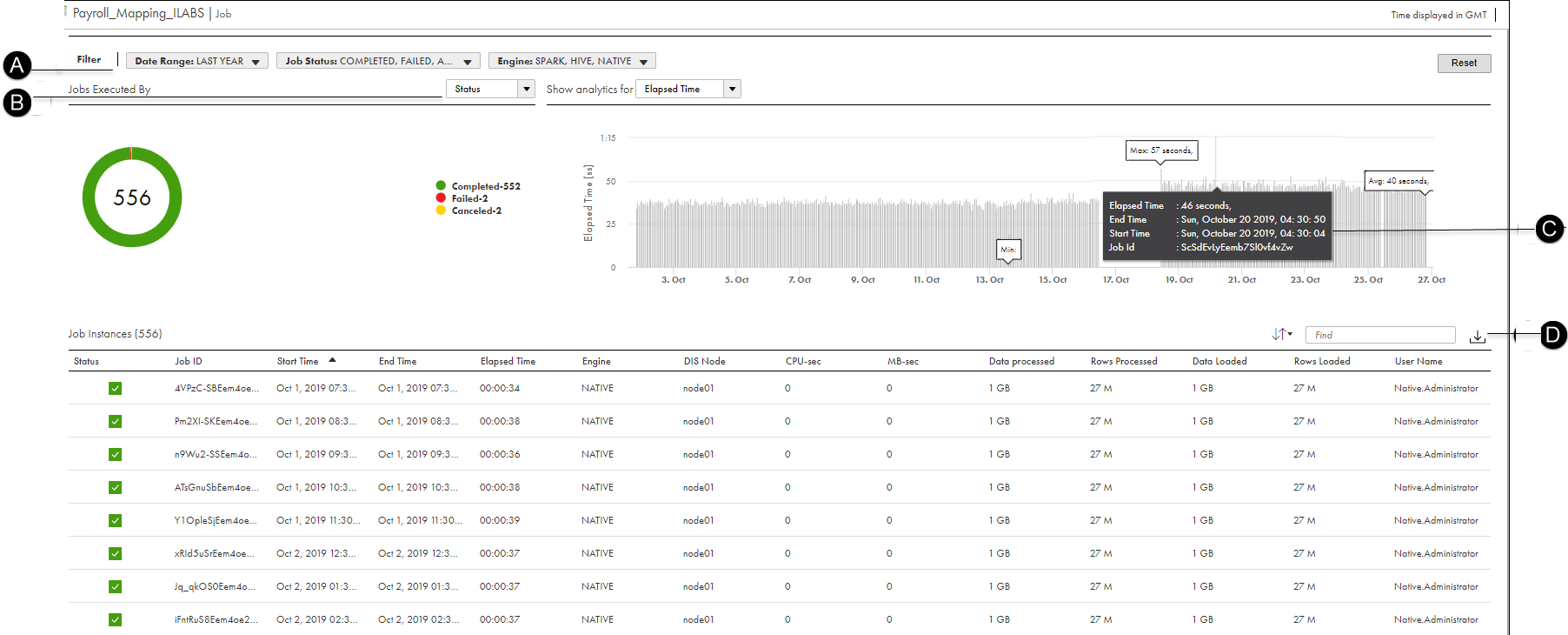1Click a domain.
2Click the Jobs tab.
3Use filters to select the jobs to view data for.
The table updates according to your filter settings. By default, the table displays data for all jobs that ran over the last seven days.
4Click a job in the table to view details.
A page displaying statistics for individual job instances loads. Use filters to select the data that you want to view. You can select additional columns to filter on from the Add Field menu.
5 Click a job in the table.
A graph displaying job run statistics loads in the page. You can view statistics by elapsed run time, amount of data processed, the amount of data read from source rows read, and the amount of data written to target rows. The charts display data based on the filters you set.

A. Use filters to select the job data you want to view.
B. Choose whether to view jobs by status or by execution engine.
C. Move your cursor across the graph to view specific details. You can zoom in on the graph to view details for a specific time frame. For more information, see Monitoring Informatica Intelligent Cloud Services.
D. Click the icon to download the table data to a comma-separated value (.csv) file.